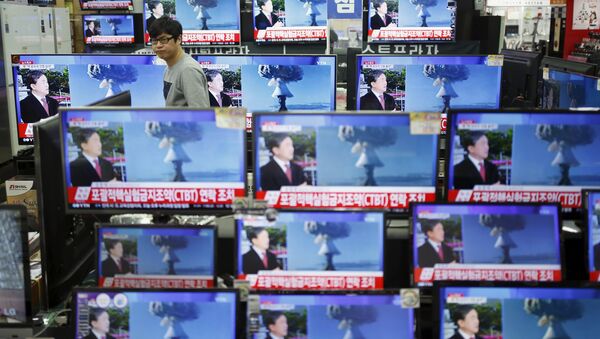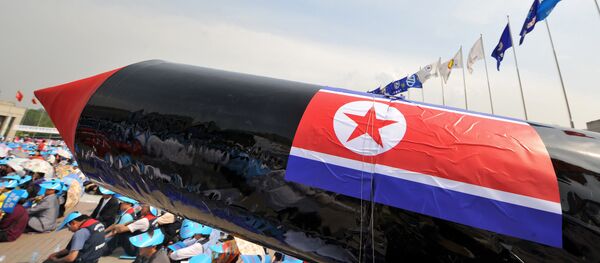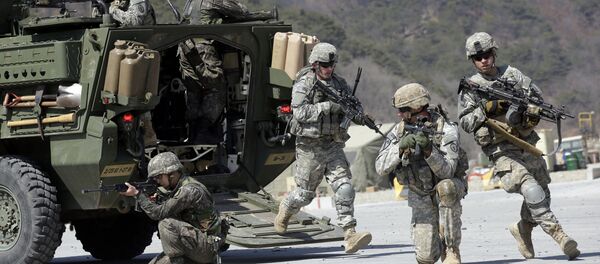After last week’s test of what Pyongyang claims was a hydrogen bomb, North Korean media went on the defensive in an attempt to deflect international criticism. Claiming that the tests marked a "new high stage" in the country’s nuclear capabilities, the country’s official KCNA news agency stressed that North Korea’s goals were to ensure peace through a strong defense.
"The test was neither to 'threaten' anyone, nor to 'provoke' someone for a certain purpose," KCNA said, adding that the move by Pyongyang was a "sure guarantee" that it will not be attacked.
For all the country’s defensive posturing, the following statement from KCNA contradicts Pyongyang’s stated peaceful intent.
"[North Korean scientists] are in high spirit to detonate H-bombs of hundreds of kilotons and megatons, capable of wiping out the whole territory of the US all at once," the outlet reported.
But possessing a nuclear device is only half of the equation. An effective delivery mechanism is essential.
To that end, North Korea released video footage last week of a successful submarine-launched ballistic missile test. If true, this would dramatically expand the range of Pyongyang’s nuclear weapons.
But US experts are doubtful.
"The rocket ejected, began to light, and then failed catastrophically," Melissa Hanham, a senior research associate with the James Martin Center for Nonproliferation Studies, told Reuters. Her organization carefully analyzed each frame of the missile video.
"North Korea used heavy video editing to cover over this fact."
According to Hanham, the video splices together multiple angles of a single launch to make it appear as if several missiles are being fired. John Schilling, an aerospace engineer, did his own analysis, and told Reuters that the tests appear to take place from a submerged barge, rather than a submarine.
"The failed launch, combined with testing from a barge shows that North Korea still has a long way to go to develop this system," he said. "An initial operational capability of a North Korean ballistic-missile submarine is not expected before 2020."
Experts have questioned the validity of Pyongyang’s hydrogen bomb claims, pointing to relatively small seismic waves detected after Wednesday’s explosion.
Tensions are high on the Korean peninsula. On Monday, Pyongyang claimed it had detained an American citizen on charges of spying for South Korea. In response to the alleged nuclear test, the Pentagon flew a B-52 bomber over the peninsula, and on Monday put all US forces stationed in South Korea on high alert.




